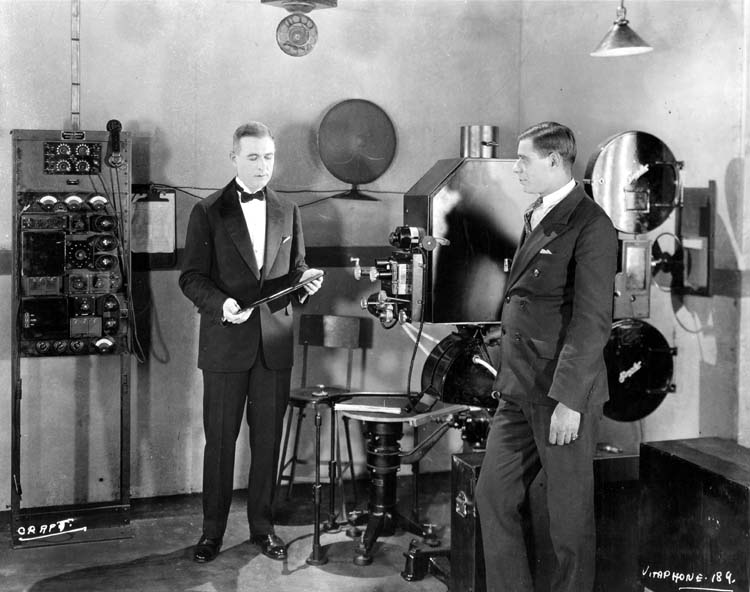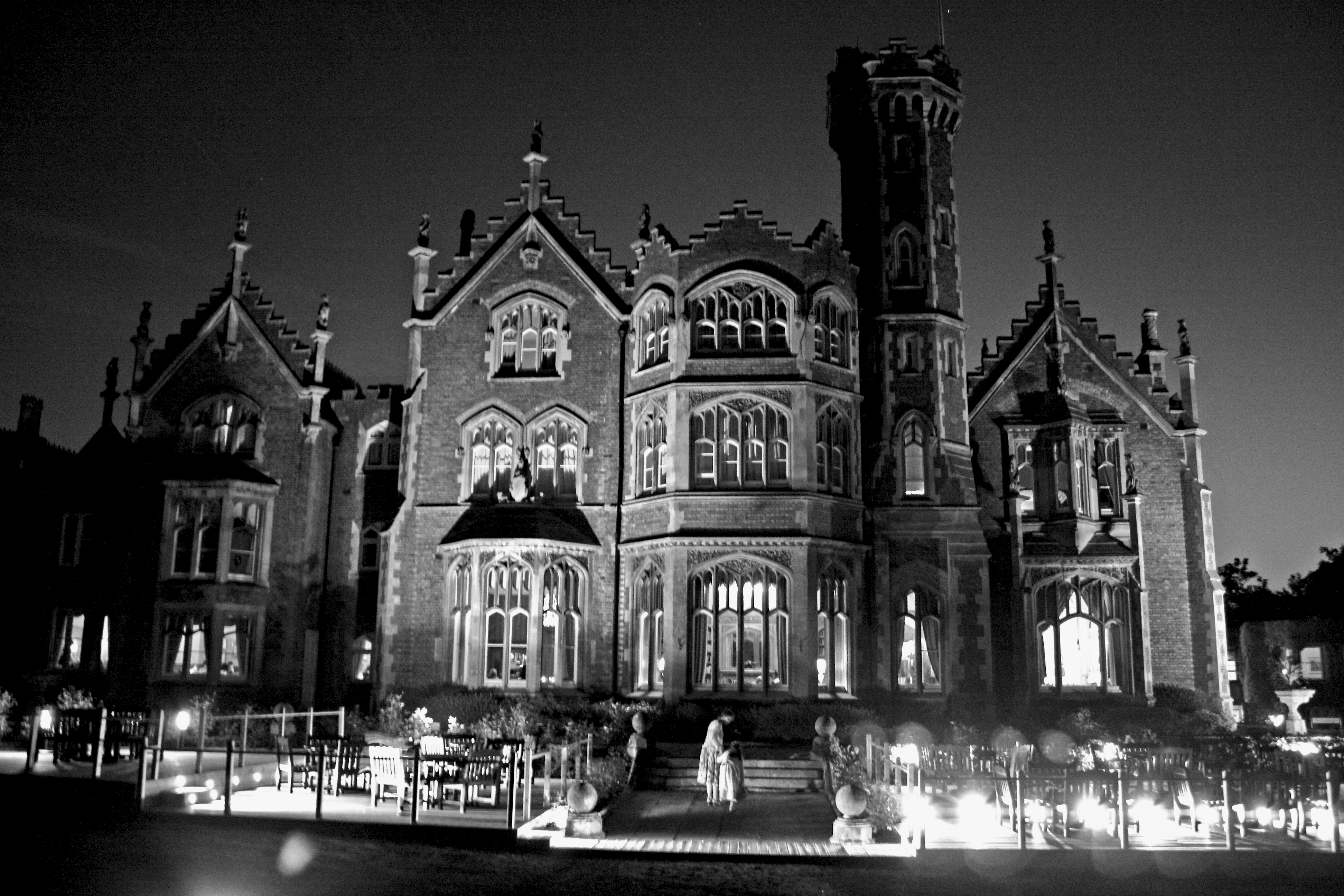|
Music Box Theatre (Chicago)
The Music Box Theatre is a historic movie theater located in Chicago, Illinois. Built in 1929, it has been operating continuously as an art-house and repertory cinema since the early 1980s. History The Music Box opened on August 22, 1929 at 3733 North Southport Avenue as a single screen theater with a seating capacity of 750. The opening night film was '' Mother’s Boy''. In 1931 the Music Box was one of several theaters bombed during an ongoing dispute between the Allied Independent Theaters' Association and the Motion Picture Operators' Union as the theater was employing non-union projectionists. Between 1977 and 1983, the Music Box was used sporadically for Spanish language films, pornographic films and Arabic language films. The theater was shuttered briefly until 1983 when Robert Chaney, Christopher Carlo and Stan Hightower formed the Music Box Theatre Corporation and restored and reopened the theater with a format of double feature revival and repertory films. Eventually, ... [...More Info...] [...Related Items...] OR: [Wikipedia] [Google] [Baidu] |
Chicago, Illinois
(''City in a Garden''); I Will , image_map = , map_caption = Interactive Map of Chicago , coordinates = , coordinates_footnotes = , subdivision_type = Country , subdivision_name = United States , subdivision_type1 = State , subdivision_type2 = Counties , subdivision_name1 = Illinois , subdivision_name2 = Cook and DuPage , established_title = Settled , established_date = , established_title2 = Incorporated (city) , established_date2 = , founder = Jean Baptiste Point du Sable , government_type = Mayor–council , governing_body = Chicago City Council , leader_title = Mayor , leader_name = Lori Lightfoot ( D) , leader_title1 = City Clerk , leader_name1 = Anna Valencia ( D) , unit_pref = Imperial , area_footnotes = , ar ... [...More Info...] [...Related Items...] OR: [Wikipedia] [Google] [Baidu] |
Paul Gapp
Paul Gapp (1928 – July 30, 1992) was an architecture critic for the ''Chicago Tribune''. He won the Pulitzer Prize for criticism in 1979. Early life and education Born in Cleveland, Gapp graduated from Ohio University in 1950 with a bachelor of science degree in journalism. Professional career From 1950 until 1956, Gapp worked for ''The Columbus Dispatch''. From 1956 until 1966, Gapp was a reporter and editor for the ''Chicago Daily News''. Between 1966 and 1972, Gapp worked as an account executive for a Chicago public-relations firm and directed the Urban Journalism Fellowship Program at the University of Chicago. He also served as the executive director of both the Chicago Chapter and the Illinois Council of the American Institute of Architects. In 1972, Gapp joined the Chicago Tribune as its assistant city editor for urban affairs. In 1974, he became the paper's architecture critic, a post he held until his death in 1992. Work as architecture critic Gapp's stock ... [...More Info...] [...Related Items...] OR: [Wikipedia] [Google] [Baidu] |
Vitaphone
Vitaphone was a sound film system used for feature films and nearly 1,000 short subjects made by Warner Bros. and its sister studio First National from 1926 to 1931. Vitaphone was the last major analog sound-on-disc system and the only one that was widely used and commercially successful. The soundtrack was not printed on the film itself, but issued separately on phonograph records. The discs, recorded at rpm (a speed first used for this system) and typically in diameter, would be played on a turntable physically coupled to the projector motor while the film was being projected. It had a frequency response of 4300 Hz. Many early talkies, such as '' The Jazz Singer'' (1927), used the Vitaphone system. The name "Vitaphone" derived from the Latin and Greek words, respectively, for "living" and "sound". The "Vitaphone" trademark was later associated with cartoons and other short subjects that had optical soundtracks and did not use discs. Early history In the e ... [...More Info...] [...Related Items...] OR: [Wikipedia] [Google] [Baidu] |
Western Electric
The Western Electric Company was an American electrical engineering and manufacturing company officially founded in 1869. A wholly owned subsidiary of American Telephone & Telegraph for most of its lifespan, it served as the primary equipment manufacturer, supplier, and purchasing agent for the Bell System from 1881 to 1984 when it was dismantled. The company was responsible for many technological innovations as well as developments in industrial management. History In 1856, George Shawk, a craftsman and telegraph maker, purchased an electrical engineering business in Cleveland, Ohio. In January, 1869, Shawk had partnered with Enos M. Barton in the former Western Union repair shop of Cleveland, to manufacture burglar, fire alarms, and other electrical items. Both men were former Western Union employees. Shawk, was the Cleveland shop foreman and Barton, was a Rochester, New York telegrapher. During this Shawk and Barton partnership, one customer was an inventor sourcing parts and ... [...More Info...] [...Related Items...] OR: [Wikipedia] [Google] [Baidu] |
Silent Film
A silent film is a film with no synchronized Sound recording and reproduction, recorded sound (or more generally, no audible dialogue). Though silent films convey narrative and emotion visually, various plot elements (such as a setting or era) or key lines of dialogue may, when necessary, be conveyed by the use of intertitle, title cards. The term "silent film" is something of a misnomer, as these films were almost always accompanied by live sounds. During the silent era that existed from the mid-1890s to the late 1920s, a piano, pianist, theatre organ, theater organist—or even, in large cities, a small orchestra—would often play music to accompany the films. Pianists and organists would play either from sheet music, or musical improvisation, improvisation. Sometimes a person would even narrate the inter-title cards for the audience. Though at the time the technology to synchronize sound with the film did not exist, music was seen as an essential part of the viewing experie ... [...More Info...] [...Related Items...] OR: [Wikipedia] [Google] [Baidu] |
Sound Film
A sound film is a motion picture with synchronized sound, or sound technologically coupled to image, as opposed to a silent film. The first known public exhibition of projected sound films took place in Paris in 1900, but decades passed before sound motion pictures became commercially practical. Reliable synchronization was difficult to achieve with the early sound-on-disc systems, and amplification and recording quality were also inadequate. Innovations in sound-on-film led to the first commercial screening of short motion pictures using the technology, which took place in 1923. The primary steps in the commercialization of sound cinema were taken in the mid-to-late 1920s. At first, the sound films which included synchronized dialogue, known as "talking pictures", or "talkies", were exclusively shorts. The earliest feature-length movies with recorded sound included only music and effects. The first feature film originally presented as a talkie (although it had only limited so ... [...More Info...] [...Related Items...] OR: [Wikipedia] [Google] [Baidu] |
Rocky Horror Picture Show
''The Rocky Horror Picture Show'' is a 1975 musical comedy horror film by 20th Century Fox, produced by Lou Adler and Michael White and directed by Jim Sharman. The screenplay was written by Sharman and actor Richard O'Brien, who is also a member of the cast. The film is based on the 1973 musical stage production ''The Rocky Horror Show'', with music, book, and lyrics by O'Brien. The production is a tribute to the science fiction and horror B movies of the 1930s through to the early 1960s. Along with O'Brien, the film stars Tim Curry, Susan Sarandon, and Barry Bostwick and is narrated by Charles Gray, with cast members from the original Royal Court Theatre, Roxy Theatre, and Belasco Theatre productions, including Nell Campbell and Patricia Quinn. The story centres on a young engaged couple whose car breaks down in the rain near a castle, where they seek a telephone to call for help. The castle or country home is occupied by strangers in elaborate costumes celebrating an ... [...More Info...] [...Related Items...] OR: [Wikipedia] [Google] [Baidu] |
70mm Film
70 mm film (or 65 mm film) is a wide high-resolution film gauge for motion picture photography, with a negative area nearly 3.5 times as large as the standard 35 mm motion picture film format. As used in cameras, the film is wide. For projection, the original 65 mm film is printed on film. The additional 5 mm contains the four magnetic strips, holding six tracks of stereophonic sound. Although later 70 mm prints use digital sound encoding (specifically the DTS format), the vast majority of existing and surviving 70 mm prints pre-date this technology. Each frame is five perforations tall, with an aspect ratio of 2.2:1. However, the use of anamorphic Ultra Panavision 70 lenses squeezes the image into an ultra-wide 2.76:1 aspect ratio. To this day, Ultra Panavision 70 produces the widest picture size in the history of filmmaking; surpassed only by Polyvision, which was only used for 1927's Napoleon. With regard to exhibition, 70 mm fil ... [...More Info...] [...Related Items...] OR: [Wikipedia] [Google] [Baidu] |
35mm Movie Film
35 mm film is a film gauge used in filmmaking, and the film standard. In motion pictures that record on film, 35 mm is the most commonly used gauge. The name of the gauge is not a direct measurement, and refers to the nominal width of the 35 mm format photographic film, which consists of strips wide. The standard image exposure length on 35 mm for movies ("single-frame" format) is four perforations per frame along both edges, which results in 16 frames per foot of film. A variety of largely proprietary gauges were devised for the numerous camera and projection systems being developed independently in the late 19th century and early 20th century, as well as a variety of film feeding systems. This resulted in cameras, projectors, and other equipment having to be calibrated to each gauge. The 35 mm width, originally specified as inches, was introduced around 1890 by William Kennedy Dickson and Thomas Edison, using 120 film stock supplied by George East ... [...More Info...] [...Related Items...] OR: [Wikipedia] [Google] [Baidu] |
16mm Film
16 mm film is a historically popular and economical gauge of film. 16 mm refers to the width of the film (about inch); other common film gauges include 8 and 35 mm. It is generally used for non-theatrical (e.g., industrial, educational, televisual) film-making, or for low-budget motion pictures. It also existed as a popular amateur or home movie-making format for several decades, alongside 8 mm film and later Super 8 film. Eastman Kodak released the first 16 mm "outfit" in 1923, consisting of a camera, projector, tripod, screen and splicer, for US$335 (). RCA-Victor introduced a 16 mm sound movie projector in 1932, and developed an optical sound-on-film 16 mm camera, released in 1935. History Eastman Kodak introduced 16 mm film in 1923, as a less expensive alternative to 35 mm film for amateurs. The same year the Victor Animatograph Corporation started producing their own 16 mm cameras and projectors. During the 1920s, th ... [...More Info...] [...Related Items...] OR: [Wikipedia] [Google] [Baidu] |
Motion Picture Herald
The ''Motion Picture Herald'' was an American film industry trade paper published from 1931 to December 1972.Anthony Slide, ed. (1985)''International Film, Radio, and Television Journals'' Greenwood Press. p. 242. It was replaced by the ''QP Herald'', which only lasted until May 1973.Robert A. Osborone (1973)''Academy Awards Oscar Annual'' ESE California. p. 10. It was established as the ''Exhibitors Herald'' in 1915. History The paper's origins begin 1915 when a Chicago printing company launched a film publication as a regional trade paper for exhibitors in the Midwest and known as ''Exhibitors Herald''. Publisher Martin Quigley bought the paper and over the following two decades developed the ''Exhibitors Herald'' into a national trade paper for the US film industry. In 1917, Quigley acquired and merged another publication, ''Motography'', into his magazine. In 1927, he further acquired and merged the magazine ''The Moving Picture World'' and began publishing it as ''Exhibito ... [...More Info...] [...Related Items...] OR: [Wikipedia] [Google] [Baidu] |









